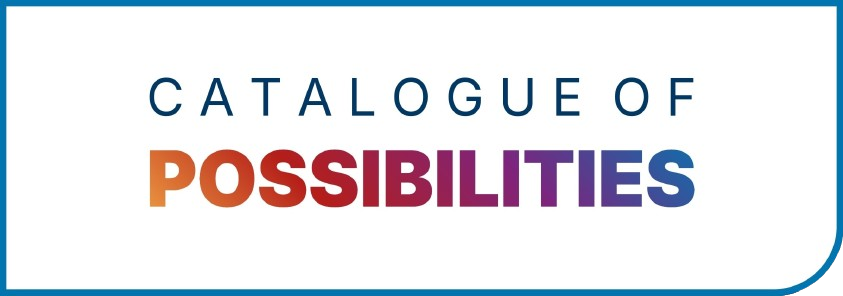Umer Zeeshan Ijaz

Reader in Information Engineering
Strategic Research Areas
A major focus of my research portfolio lies in Numerical Ecology and Machine Learning concerned with extracting patterns, testing hypotheses, and modelling ecological systems using high-dimensional biological and environmental data. My work in this domain is underpinned by a broad and sophisticated application of mathematical and statistical algorithms, particularly within microbial ecology, systems biology, and environmental monitoring.
I routinely develop and apply the following approaches:
1. Multivariate Ordination and Projection Techniques form the foundation of exploratory data analysis in ecology.
These include Principal Component Analysis (PCA) and Correspondence Analysis (CA), which reduce dimensionality and visualize gradients in species or taxonomic composition; Non-Metric Multidimensional Scaling (NMDS), a non-linear method that maintains rank-order distances and is ideal for non-Euclidean ecological data; and Canonical Correspondence Analysis (CCA) and Redundancy Analysis (RDA), which are constrained ordination techniques correlating species distributions with environmental gradients. These techniques involve matrix algebra, eigen decomposition, and optimization routines, and are used extensively in my software tools such as RVLAB and CViewer.
2. Dissimilarity-Based Methods and Permutation Testing are central to my approach as well.
I compute distance measures like Bray-Curtis, Jaccard, and UniFrac from abundance or presence/absence matrices and apply PERMANOVA (Permutational Multivariate Analysis of Variance), a non-parametric method to test group differences in high-dimensional space. Additionally, Mantel and Procrustes tests are employed for matrix comparisons and validation of ordination robustness. These methods depend heavily on distance metrics, randomization, and permutation algorithms, often requiring computationally intensive resampling schemes.
3. Ecological Null Modelling and Assembly Theory are essential for understanding whether observed patterns arise from chance or ecological processes.
I apply randomization-based null models to test species co-occurrence, nestedness, and community assembly processes. I also developed and published NMGS, a software package for fitting the Unified Neutral Theory of Biodiversity, which incorporates likelihood-based and Bayesian fitting procedures (DOI: 10.1109/JPROC.2015.2428213). These models are crucial for differentiating niche-based from stochastic processes and often involve solving complex likelihood equations or running MCMC simulations.
4. Generalised Modelling Frameworks such as Generalised Linear Models (GLMs) and Generalised Additive Models (GAMs) are used to test hypotheses regarding species-environment relationships.
I also utilize Distance-Based Redundancy Analysis (db-RDA) to project dissimilarities in a constrained space linking community structure with predictors, and Generalised Dissimilarity Modelling (GDM) to model and predict beta-diversity across geographic gradients. These methods rely on statistical theory and computational optimization and have been incorporated into my microbiomeSEQ package for scalable analysis of large ecological matrices.
5. Latent Variable and Mixture Modelling addresses the influence of unobserved (latent) factors on ecological processes.
I employ Latent Variable Models (LVMs), including factor analysis and structural equation modelling, to infer hidden drivers in complex datasets. Gaussian Mixture Models (GMMs), used in CONCOCT for genome binning in metagenomics (DOI: 10.1038/nmeth.3103), blend probabilistic modelling with Expectation-Maximization (EM) and variational inference algorithms.
6. Bayesian Inference and Probabilistic Frameworks form another cornerstone of my methodology.
I use Bayesian hierarchical models for spatial-temporal prediction and uncertainty quantification. SEQENV, my ontology-driven environmental context detection system, leverages Bayesian classification to match text descriptors to ecological terms (DOI: 10.7717/peerj.2690). Furthermore, my short-read amplicon meta-analysis pipeline is built on Bayesian Lowest Common Ancestor algorithm (DOI: 10.1101/2020.12.23.424166). These approaches provide a mathematically rigorous framework to handle model uncertainty, incorporate prior knowledge, and manage complex dependencies.
Software, Visibility, and Global Standing
I have translated these mathematical methods into open-source tools widely adopted across ecology, microbiology, and bioinformatics communities. These include RVLAB, which offers multivariate ecological analysis within a user-friendly GUI; NMGS for neutral theory model fitting; microbiomeSEQ, a unified R package for statistical ecology; CViewer, an interactive platform for visualizing multi-omics structure; as well as CONCOCT, SEQENV, and NanoAmpli-Seq, which provide domain-specific ecological analytics platforms. These tools are frequently cited in high-impact journals such as Nature Methods, and the ISME Journal, and have been incorporated into larger bioinformatics workflows like MetaWRAP and Anvi’o. According to Google Scholar, as of June 2025, I am currently the 5th most cited researcher globally in Numerical Ecology, a reflection of the mathematical depth, global utility, and interdisciplinary influence of my work: https://scholar.google.com/citations?user=SqYGlqAAAAAJ&hl=en&oi=ao

